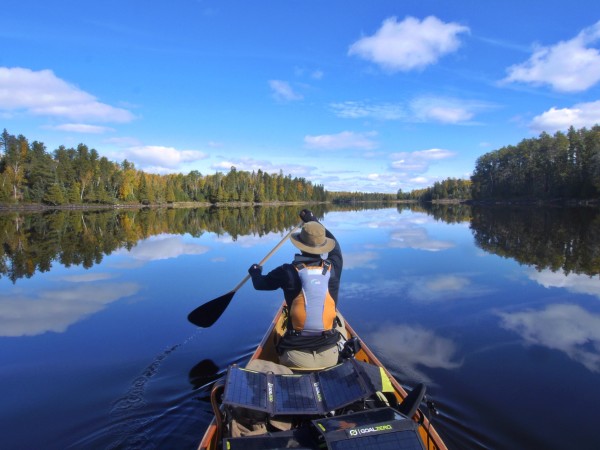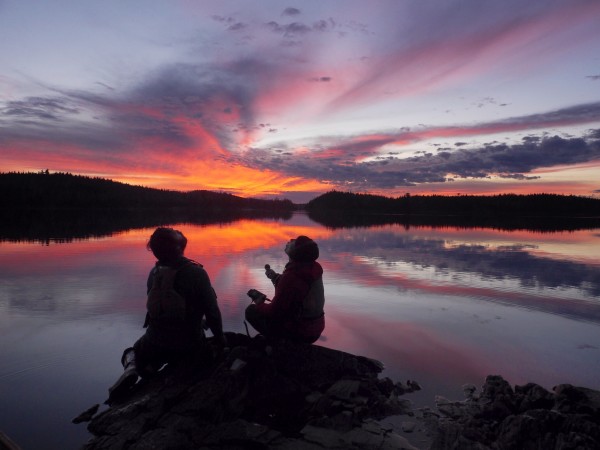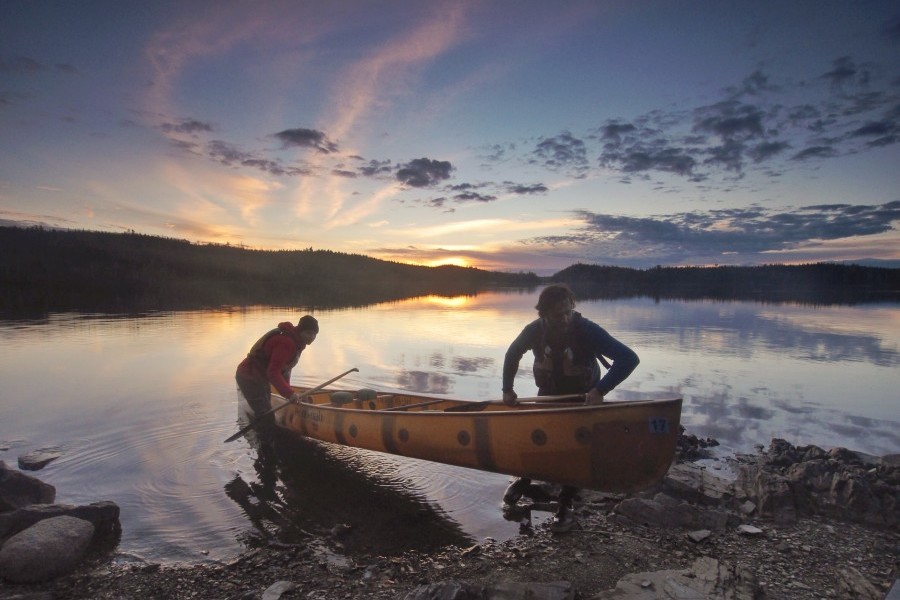Guest blog post by Ellie Siler from the Campaign to Save the Boundary Waters.
Time to Act: The Boundary Waters Needs Your Voice
On January 13, the United States Forest Service initiated a two-year pause for any new mineral leases or exploration, long enough to allow an environmental review of the watershed surrounding the Boundary Waters Canoe Area Wilderness and Voyageurs National Park in northern Minnesota. The environmental review will be conducted by the Bureau of Land Management (BLM) and U.S. Forest Service. This review comes on the heels of an announcement from the BLM that sulfide-ore copper mining leases held by Twin Metals Minnesota, a company owned by Antofagasta in Chile, were denied.
For the past three years, the Campaign to Save the Boundary Waters, led by Northeastern Minnesotans for Wilderness has been building a movement to protect this Wilderness. Along with supporters, organizations (including Conservation Alliance), businesses, veterans, students, hunters, anglers and more, the Campaign has successfully created a national movement on behalf of this “quiet Wilderness” and we’ve now reached a critical stage in the efforts to gain permanent protection for the watershed of this national treasure.
Now is the time to speak up for the future of this beloved hunting, fishing and paddling destination and join the chorus of voices to make sure it is protected. Sulfide-ore copper mining would be disastrous for the ecosystem, business that depend on the Wilderness, and all those that recreate in the area. Now is the time to take action! The Forest Service is taking public comments now — tell the agency to protect the entire Boundary Waters are from sulfide-ore copper mining. You can submit a comment through the Campaign to Save the Boundary Waters.
Value of this Place
The Boundary Waters Canoe Area Wilderness is a unique treasure in northern Minnesota. The 1.1 million acre Wilderness is characterized by its interconnected lakes and rivers and uninterrupted forests. The Boundary Waters includes 1,200 miles of canoe and kayak routes, 237.5 miles of overnight hiking trails and 2,000 designated campsites. Several sensitive wildlife species make the Wilderness their home, including the gray wolf, moose, Canada lynx and loon.
As America’s most visited Wilderness Area, the Boundary Waters is the economic lifeblood of northeastern Minnesota’s lucrative tourism industry. The Boundary Waters and Voyageurs National Park help drive the economy of northeastern Minnesota, where tourism supports nearly 17,000 jobs and brings $850 million in sales annually to the region (Explore Minnesota).
Risks Facing the Wilderness
This amazing landscape is threatened by proposed sulfide-ore copper mining from Twin Metals and other companies owned by foreign mining giants. This type of mining has never been done before in Minnesota and has never been done safely.
The proposed mining sites are upstream from the Wilderness. The toxic pollution could drain into and permanently pollute lakes and rivers lying in the heart of the Boundary Waters Canoe Area Wilderness. Mining activity would also likely fragment and reduce the acreage of forest surrounding the Wilderness while disrupting sensitive wildlife habitats.
The U.S. Environmental Protection Agency has identified hard rock mining, of which sulfide-ore copper mining is part, as the most toxic industry in America. Byproducts of sulfide-ore copper mining include hazardous pollutants such as sulfuric acid and heavy metals, which are harmful to wildlife and people, and could permanently ruin the pristine water and unspoiled forests of the Boundary Waters. Similar mines like the one at Mount Polley in British Columbia or Gold King Mine in Colorado have had catastrophic spills in recent years.
Additionally, independent scientific research shows that sulfide-ore copper mines in this watershed would have lasting damaging results. “If sulfide mines are developed in the Rainy Headwaters [part of the Boundary Waters watershed], it is not a question of whether, but when, a leak will occur that will have major impacts on the water quality of the Boundary Waters Canoe Area Wilderness,” said hydrologist Tom Myers.
Momentum Grows to Support Protection
Knowing these risks, Northeastern Minnesotans for Wilderness, led by Ely-area residents and business-owners launched the Campaign to Save the Boundary Waters in 2013. We are leading the effort to gain permanent protection for the Wilderness from proposed sulfide-ore copper mining in this watershed.
Our national movement includes 35 partner organizations, more than 180 businesses, veterans, health professionals, hunters, anglers, youth, faith leaders and Boundary Waters users. Dedicated supporters have formed Sportsmen for the Boundary Waters, Veterans for the Boundary Waters and Gophers for the Boundary Waters (University of Minnesota students and alumni).
As our efforts have grown, so has the momentum to protect the Wilderness. In spring of 2016, Minnesota Governor Mark Dayton called the BWCA a crown jewel of the state and voiced his support of protecting the Boundary Waters watershed.
In summer 2016, the U.S. Forest Service held a 30-day public input period to evaluate whether to consent to the renewal of Twin Metals leases. At the time, the agency stated, it was “deeply concerned by the location of the leases within the same watershed as the BWCAW, and by the inherent risks associated with potential copper, nickel and other sulfide mining operations within that watershed.” At the end of the input period, the Campaign and its partners delivered more than 74,000 signatures to the Forest Service in support of denying the leases and urging for permanent protection, resulting in the denial of Twin Metals leases in December.
Over the last three years, supporters have found creative ways to support the Campaign, which have been dubbed “adventure advocacy.” The Paddle to DC and Bike Tour to Save the Boundary Waters preceded last year’s incredible Year in the Wilderness. In fall 2015, explorers and wilderness guides Dave and Amy Freeman embarked on a yearlong expedition in the Boundary Waters Canoe Area Wilderness in support of the Campaign to Save the Boundary Waters’ efforts to protect the Boundary Waters from proposed sulfide-ore copper mining along the Wilderness edge. After 366 days in the wilderness, Dave and Amy returned on September 23, 2016. During their Year in the Wilderness, Dave and Amy camped at approximately 120 different sites; explored 500 lakes, rivers and streams; and traveled more than 2,000 miles by canoe, foot, cross-country ski, snowshoe and dog team. The expedition was documented in the short film, Bear Witness, which you can watch and share here.
All of this led to a critical moment on December 15, when federal agencies announced the denial of Twin Metals expired mineral leases and the initiation of an environmental review of the impacts of sulfide-ore copper mining in the watershed of the Wilderness to determine if this is the wrong place for sulfide-ore copper mining.
What’s Next
While we’re excited about these recent developments, we know there’s more work to be done to ensure permanent protection for Minnesota’s Boundary Waters. We need to work together so that hundreds of thousands of people speak out for the Wilderness during this comment period and we need to let Minnesota and federal decision makers know that we support permanent protection of the watershed. We can’t do that without you. So join us and speak up and show your support by adding a comment here.






